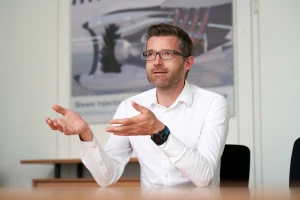good-to-know
Developments in eVTOL: What lies ahead for air taxis and drones?
Air taxis ready for takeoff: Experts expect the first commercial eVTOL flights to be launched on fixed routes within the next few years. We take a look at ten key developments.
author: Nicole Geffert | 7 mins reading time published on: 06.11.2023
author:
Nicole Geffert
has been working as a freelance journalist covering topics such as research and science, money and taxes, and education and careers since 1999.

©Lilium
The aviation industry is in the midst of a dynamic transformation. Manufacturers are aiming to revolutionize mobility within and between cities with their electric vertical takeoff and landing (eVTOL) aircraft. This technology has many applications—including short-haul air taxis and autonomous delivery drones—and eVTOL aircraft makers say it could be the solution to growing problems of urban mobility, such as congestion and air pollution. Yet the industry is still facing plenty of unanswered questions, especially in the areas of safety, certification, acceptance, and infrastructure.
The requirement for commercial operation of an eVTOL aircraft is an official flight permit, which means that the legal and regulatory framework must be clarified. eVTOL aircraft will also need to meet stringent safety standards and gain the trust of potential users. Other challenges include the creation of suitable takeoff and landing points, charging facilities, and maintenance hubs. Experts expect to see the launch of the first commercial eVTOL flights on fixed routes sometime within the next few years, but it is still too early to predict how quickly and to what extent this new form of mobility will make a tangible impact. AEROREPORT presents ten examples of the latest developments in eVTOL technology.
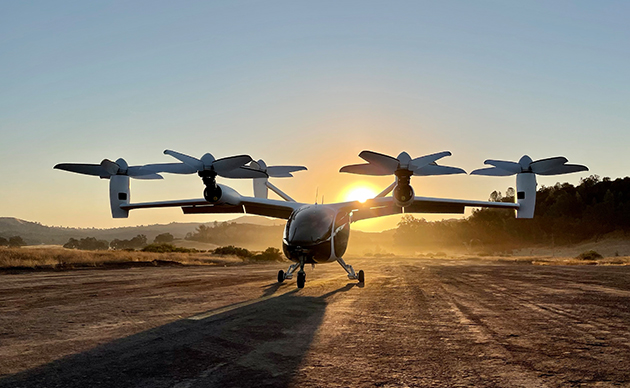
©Joby Aero, Inc
Joby Aviation: U.S. Air Force on board as launch customer
Joby Aviation’s first production prototype rolled off the company’s assembly line in Marina, California, in the summer of 2023. The first test flights with a pre-series model and pilots on board followed in October. The eVTOL start-up worked closely with its strategic partner and investor Toyota to build the production facility and prototype aircraft. Equipped with six electric motors, the air taxi is designed to carry four passengers and one pilot at a top speed of around 320 km/h. Low noise emissions are a key feature, with Joby promising that its eVTOL aircraft will be quiet enough to take off and land in any neighborhood. The first aircraft is expected to be delivered to Edwards Air Force Base after testing is completed in 2024. The U.S. Air Force plans to use the aircraft for logistical transport.
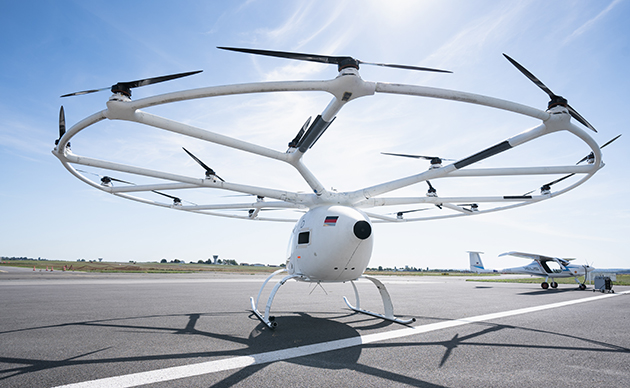
©Volocopter
Volocopter: The future of air rescue
German manufacturer Volocopter has set itself the ambitious goal of becoming the first company to launch a commercial air taxi service. It hopes to have the service up and running in time for the 2024 Olympic Games in Paris. In the fall of that same year, Germany’s ADAC Luftrettung will be putting Volocopter’s first VoloCity multicopter through its paces as part of a multi-year manned air-rescue pilot project. “It’s fantastic to think that Volocopter’s first deployment in Germany will be for the purpose of saving lives,” says Volocopter CEO Dirk Hoke. The company produces its multicopters in a hangar in Bruchsal near the city of Karlsruhe. In the initial phase, the VoloCity will have a pilot on board. The two-seater aircraft with its distinctive halo of 18 rotors currently has a range of 35 kilometers and a top speed of 110 km/h.
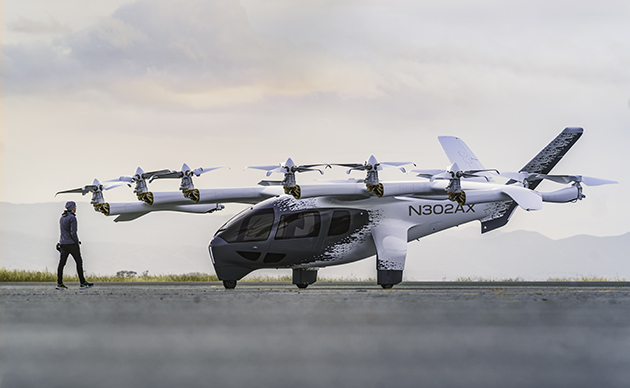
©Archer Aviation
Archer Aviation: From downtown to the airport
Californian company Archer Aviation has also embarked on a partnership with the U.S. Air Force. In a deal worth up to 142 million U.S. dollars, the company will deliver eVTOL aircraft, train pilots, develop maintenance and repair techniques, and share flight test data. Archer’s first all-electric “Midnight” aircraft underwent final assembly in May this year. With room for four passengers, one pilot, and luggage, it is designed to travel at up to 240 km/h. Powered by 12 electric motors, the VTOL aircraft will also be used in cooperation with United Airlines to transport passengers between New York City and Newark Airport in a planned flight time of ten minutes. Archer plans to launch its urban air mobility (UAM) network across the New York metropolitan area in 2025.
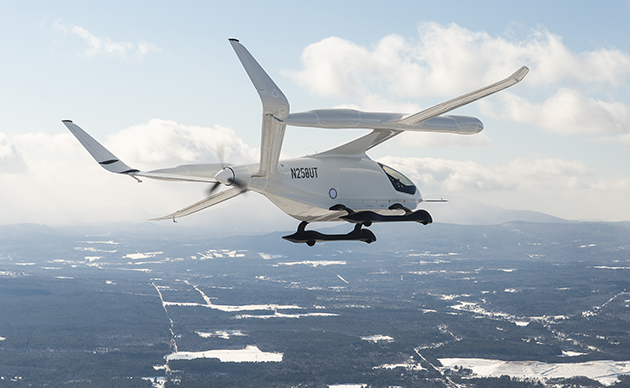
©Beta Technologies
Beta Technologies: Cargo first, then passengers
Headquartered in Burlington, Vermont, electric aircraft manufacturer Beta Technologies aims to get its ALIA-250 eVTOL aircraft certified by 2026. The company has set an even earlier date for certification of the conventional takeoff and landing (CTOL) version of its electric aircraft, the CX300, which it hopes the U.S. Federal Aviation Administration (FAA) will complete by 2025. The CX300 is said to share many design features with the ALIA-500 VTOL aircraft, but will fly airport-to-airport from conventional runways. Beta plans to focus first on cargo transport and carry passengers later. The electric aircraft seats five passengers and one pilot. Beta founder and CEO Kyle Clark also announced that the company will first certify the electric motor as a standalone product so that it can be sold separately.
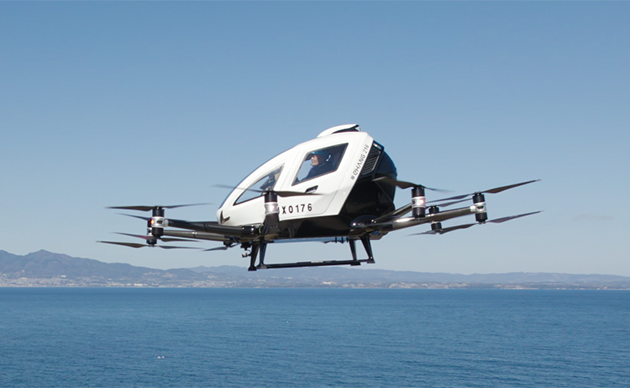
©Ehang
Ehang: Sightseeing for tourists
This October, Chinese manufacturer EHang’s two-seater EH216-S passenger-grade AAV received the world’s first type certification for a self-flying air taxi from the Civil Aviation Ad-ministration of China (CAAC), according to the company. This means test operation can now commence. While other eVTOL manufacturers plan to fly with pilots on board for now, EHang relies on autonomous aircraft. According to the manufacturer, the EH216-S can carry up to 220 kilograms and fly up to 30 kilometers at a top speed of 130 km/h. To get off the ground, the aircraft uses 16 propellers mounted on 8 twin arms. EHang plans to establish an initial urban air mobility (UAM) demonstration center at Shenzhen’s OH Bay, where it will offer sightseeing flights for tourists.
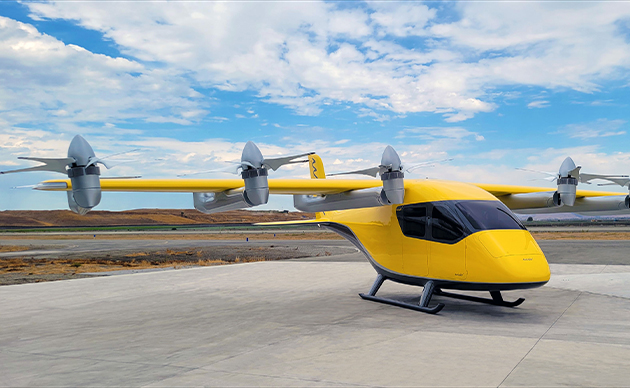
©Wisk Aero
Wisk Aero (Boeing): No pilot on board
Boeing’s air taxi unit Wisk Aero was originally a joint venture between the U.S. aircraft manufacturer and Kittyhawk. Boeing is now sole owner of the company, which is planning to launch an all-electric air taxi with an autonomous flight-control system and room for four passengers. On July 25, 2023, Wisk’s fifth-generation eVTOL aircraft took to the skies for the first time at the airshow in Oshkosh, Wisconsin. Powered by 12 electric rotors, the VTOL aircraft can reach a maximum altitude of 1,219 meters. The six rotors at the rear of the aircraft’s wings always operate vertically, while the six at the front can be tilted. These tiltable front rotors are vertical during takeoff and landing but pivot to a horizontal position in flight. The next step is for the model to obtain type certification from the U.S. Federal Aviation Administration (FAA).

©Elroy Air
Elroy Air: Express deliveries
Californian drone manufacturer Elroy Air describes its Chaparral VTOL drone as a “bidirectional conveyor belt through the sky.” According to the manufacturer, the first version of the aircraft can transport up to 136 kilograms of cargo over a 480-kilometer range thanks to its hybrid-electric propulsion system and simple, redundant vertical and forward-flight propulsors. The Chaparral is part of an integrated, high-throughput autonomous aerial logistics system. The vehicle can land, deposit cargo, pick up another load, and take off again, all in just a few minutes and without any operator intervention, says the manufacturer. Cargo is transported in lightweight, aerodynamic pods that can be pre-loaded by ground personnel.
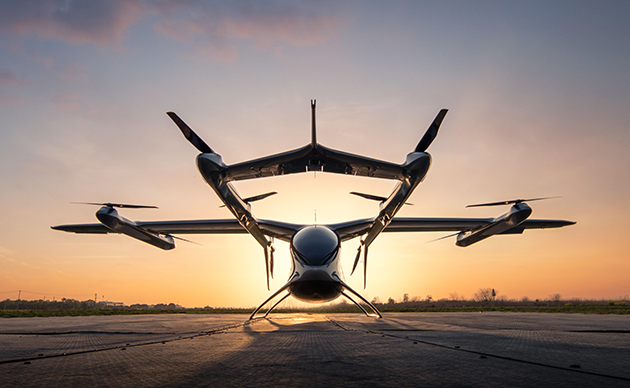
©Autoflight
AutoFlight: Experimental flights in Paris
In Shanghai in summer 2023, AutoFlight executed what the company claims was the world’s first eVTOL formation flight using three of its autonomous Prosperity I aircraft. At the beginning of this year, the company—which has dual headquarters in Augsburg, Germany, and Shanghai, China—sent one of its prototypes on a 250-kilometer journey on a single battery charge. According to AutoFlight, the aircraft has a maximum cruising speed of 200 km/h and can carry a maximum payload of around 350 kilograms. AutoFlight intends to conduct experimental flights from Pontoise Vertiport during the 2024 Summer Olympic Games in Paris. A cargo model of Prosperity I is also scheduled to be launched in Asia next year. The company plans to gradually develop its aircraft into a passenger air taxi over the next few years.

©Eve Air Mobility
Eve Air Mobility: Global service network
eVTOL manufacturer Eve Air Mobility, a subsidiary of Brazilian aircraft manufacturer Embraer, has chosen the city of Taubaté in the state of São Paulo as the location of its first production facility for the “Eve” eVTOL aircraft. The company expects to start assembly of its first eVTOL prototypes before the end of 2023, followed by a test campaign in 2024. Eve is scheduled to enter service in 2026. Although the manufacturer has kept most of the technical details under wraps, the aircraft is said to feature a conventional wing with eight fixed rotors, providing vertical takeoff and landing capabilities in a simple lift-plus-cruise design. It is designed to carry a pilot and four passengers and is expected to have a range of up to 100 kilometers. Eve Air Mobility is also seeking to develop a global service network as well as solutions for air traffic management.
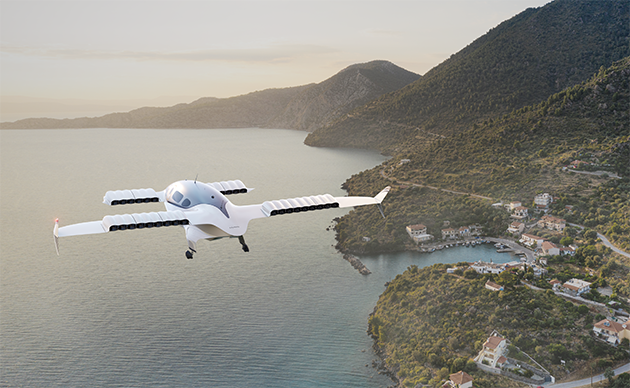
©Lilium
Lilium: Direct connections between cities
German air taxi pioneer Lilium plans to conduct the first manned flight of its e-jet in the second half of 2024. The company, which is based in Weßling near Munich, is developing a six-seater electric aircraft powered by 30 all-electric jet engines and featuring tiltable ducted fans. So far, flight tests have been conducted with smaller and unmanned prototypes. Lilium plans to use its jet to provide regional air mobility services that will connect cities and communities directly. Unlike the very short distances of urban air mobility, this would see its eVTOL aircraft covering distances of between 40 and 200 kilometers in an initial phase, and up to 500 kilometers in the long term. Lilium is currently seeking certification and production of its jet by the aviation authorities EASA and FAA.




